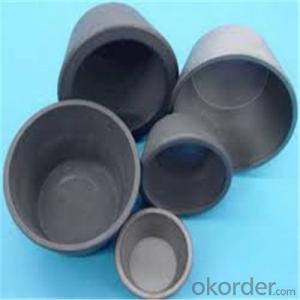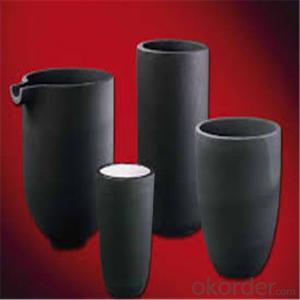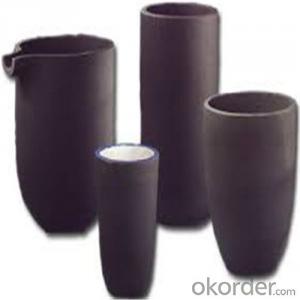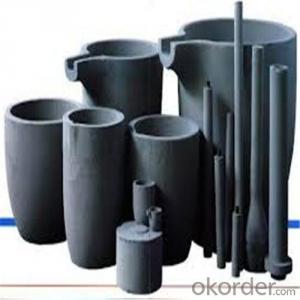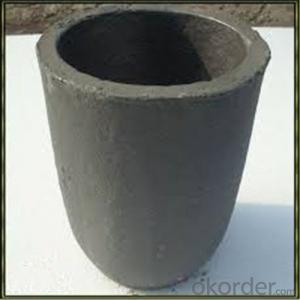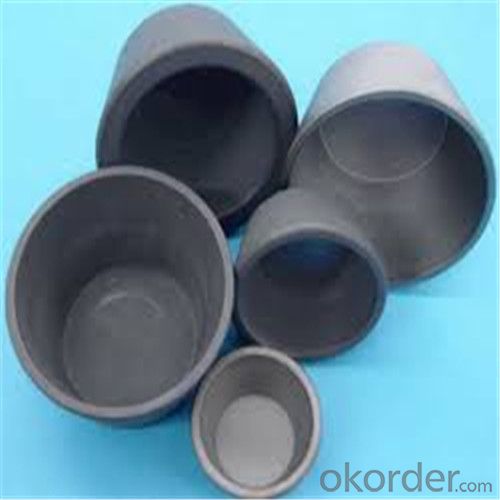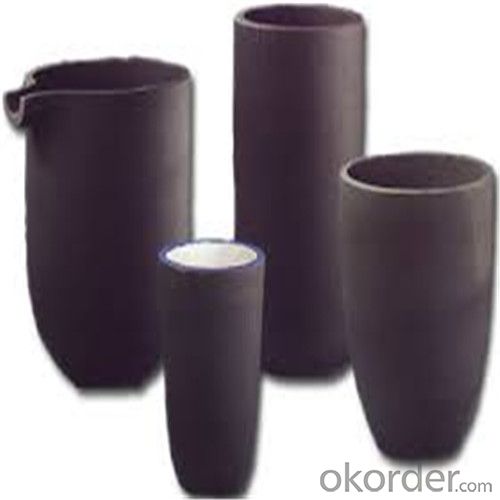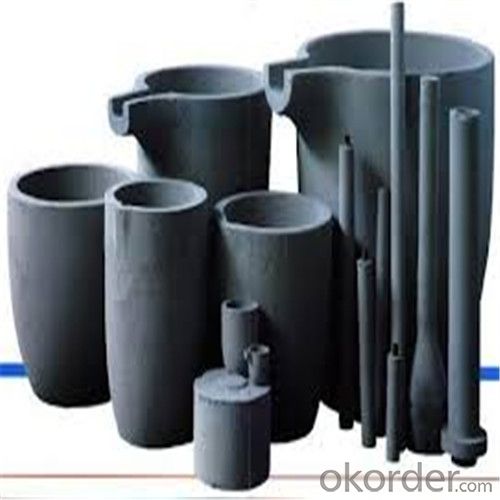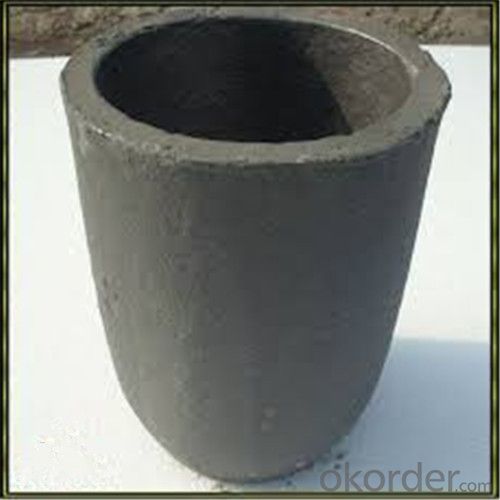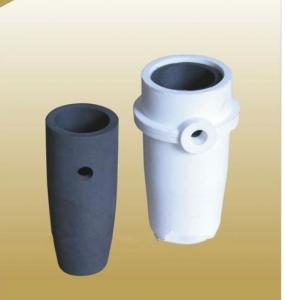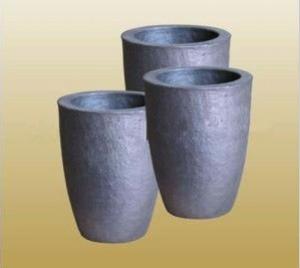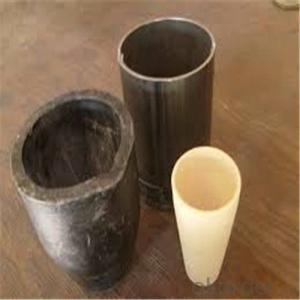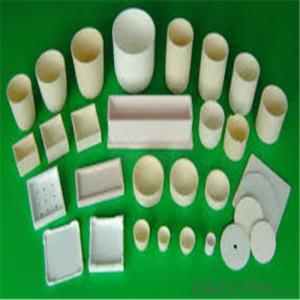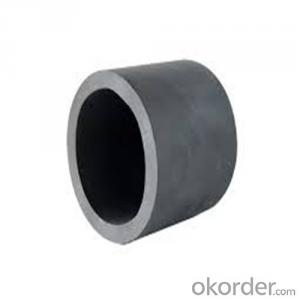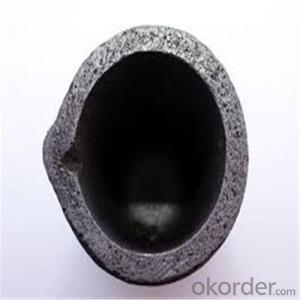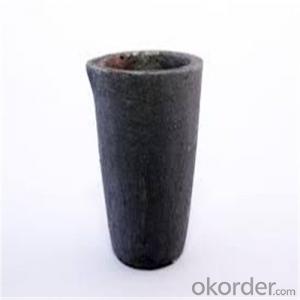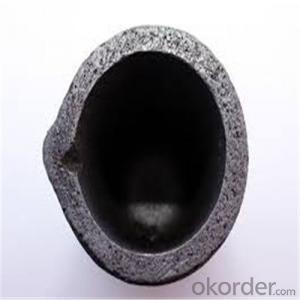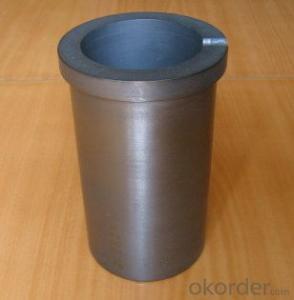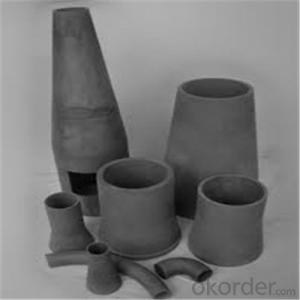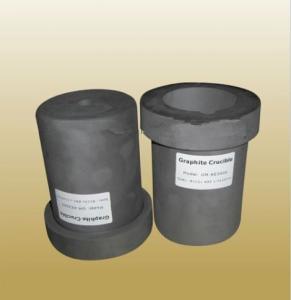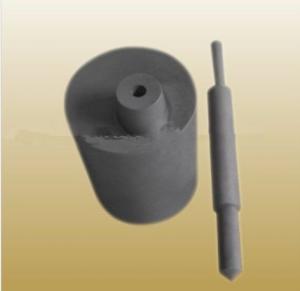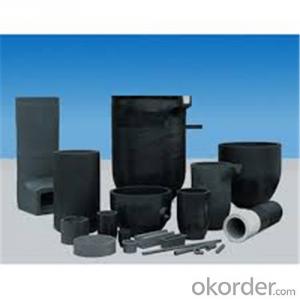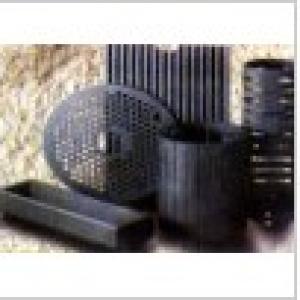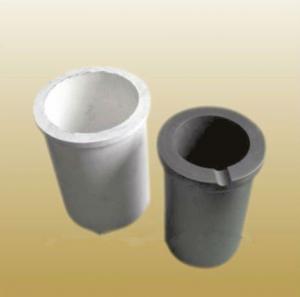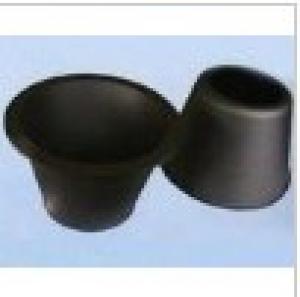Borax Graphite Crucible for High Heat Resistance Copper Melting
- Loading Port:
- Shanghai
- Payment Terms:
- TT OR LC
- Min Order Qty:
- 1 pc
- Supply Capability:
- 1000 pc/month
OKorder Service Pledge
OKorder Financial Service
You Might Also Like
Quick Details for SiC Crucibles For Melting Aluminium,Copper, Brass with High Heat Resistance
| Type: | High Strength, graphite crucible crucible | Application: | melting metal | Height: | as your requirements |
| Composition: | High Pure | Top Diameter: | 10-600mm | Bottom Diameter: | 10-1000mm |
| Place of Origin: | China (Mainland) | Brand Name: | Model Number: | ||
| Color: | Black grey | Si3N4%: | 5min | Fe2O3%: | 0.7max |
| C%: | 30-45 | Apparent porosity: | 30max | Refractoriness: | 1680 |
| Bulk Density: | 1.71min | Using life: | >5000 hours | MAX temperature: | 1600c |
Packaging & Delivery
| Packaging Details: | Seaworty packing or as per customer's detail requirement of graphite crucible. |
| Delivery Detail: | within 20-30 days after confirm order of graphite cru |
SiC Crucibles For Melting Aluminium,Copper, Brass with High Heat Resistance
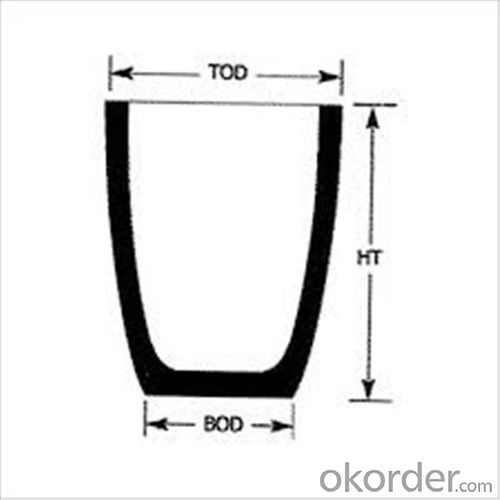
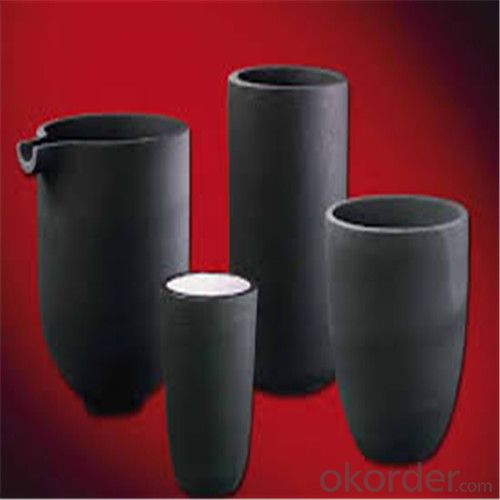
Features of SiC 95% silicon carbide sic crucible
1. resistance to deformation at high temperature,
2. thermal shock resistance, wear resistance, corrosion resistance.
3. anti-oxidation, anti- erosion.
Usage of SiC 95% silicon carbide sic crucible
electricity and steel slag trench,
coal chemical and mining transport pipeline.
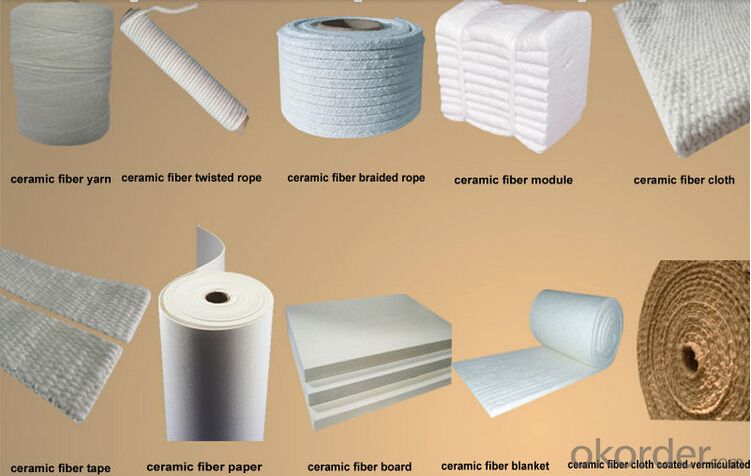
FAQ
1.What's your MOQ?
We will indicate the MOQ for each item in the quotation list. We accept the sample and trail order.
2.Can I negotiate the Prices?
Sure, we may consider discounts for bulk order of products.
3.How long will it take to complete my order?
For the stock items, we can arrange the shippment within 2~3days after received your payment. For the customized items, we will indicate the delivery time in the quotation list.
4.Can you give warranty of your products?
Yes, we extend a 100% satifisfaction guarantee on all items. Please feel free to provide timely feedback if you're not satisfied with N&D's Quality and Service. For the overseas orders, if there is a quality problem, please kindly to provide the picturers to show the problem by e-mail. We will provide the replacements to you at our cost according to actual conditions.
5.Can I visit you?
Sure. If you're a volume buyer and would like to visit our in-house products and production line, please contact us to make an appointment.
- Q: What are the different methods of controlling temperature in a graphite crucible?
- There are several methods of controlling temperature in a graphite crucible, including the use of external heating sources such as gas burners or electric heaters, the addition of insulating materials to regulate heat transfer, and the implementation of temperature sensors and controllers to maintain a specific temperature range. Additionally, techniques like preheating the crucible or adjusting the gas flow rate can also impact and control the temperature inside the crucible.
- Q: Can a graphite crucible be used for metal powder sintering?
- Yes, a graphite crucible can be used for metal powder sintering. Graphite crucibles are commonly used in high-temperature applications, such as melting or sintering metals, due to their excellent thermal conductivity and resistance to thermal shock. The graphite material is able to withstand the high temperatures required for metal powder sintering, allowing for effective and efficient sintering processes. It is important to note that the specific graphite crucible used should be chosen based on the type of metal being sintered, as certain metals may react with graphite at high temperatures. Additionally, proper handling and maintenance of the crucible is necessary to ensure its longevity and performance during the sintering process.
- Q: What special attention should be paid to the use of graphite crucible in vacuum induction melting of titanium alloy?
- And then affect the phase change temperature and mechanical properties of the alloy, so in smelting, the crucible material, melting atmosphere and environment should be seriously considered, selected, and strictly controlled to inhibit the production of sundry
- Q: What are the different methods of preheating a graphite crucible?
- There are several methods of preheating a graphite crucible, including using an electric furnace, gas burner, induction heating, or a combination of these methods. Electric furnaces provide a controlled and uniform heat distribution, gas burners offer a quick and efficient heating process, and induction heating utilizes electromagnetic fields for rapid and localized heating. The choice of method depends on the specific requirements of the application and the available equipment.
- Q: What are the different methods of preventing cracks in a graphite crucible?
- There are several methods to prevent cracks in a graphite crucible, including preheating the crucible before use, avoiding rapid temperature changes, using a protective coating, and ensuring proper handling and storage of the crucible.
- Q: Is it possible to customize the shape or design of a graphite crucible?
- Yes, it is possible to customize the shape or design of a graphite crucible. Graphite is a highly versatile material that can be molded and shaped into various forms. Graphite crucibles are often used in industries such as metallurgy, foundries, and laboratories for melting and casting metals. To customize the shape or design of a graphite crucible, manufacturers use specialized techniques such as CNC machining or graphite molding. CNC machining involves using computer-controlled machines to precisely shape the graphite material into the desired form. This method allows for highly accurate and complex designs to be created. Alternatively, graphite molding is a process that involves compressing graphite powder into a specific shape using a mold. This method is often used for simpler and more standard crucible shapes. Customization of graphite crucibles can include altering the dimensions, adding handles or spouts, or creating unique designs to suit specific applications. The customization process allows for the crucible to be tailored to the specific requirements of the user, ensuring optimal performance and efficiency. It is worth noting that while customizing the shape or design of a graphite crucible is possible, it may come with additional costs and lead times. This is because the customization process requires specialized equipment and expertise. Therefore, it is essential to communicate with the manufacturer or supplier to discuss the customization options, feasibility, and any associated costs.
- Q: Can graphite crucibles be used for melting nickel?
- Yes, graphite crucibles can be used for melting nickel. Graphite crucibles are commonly used in high-temperature applications, including the melting of various metals and alloys. Graphite has excellent thermal conductivity and can withstand high temperatures, making it suitable for melting nickel, which has a melting point of around 1,455 degrees Celsius (2,651 degrees Fahrenheit). Additionally, graphite crucibles have good chemical resistance and do not react with nickel, allowing for a clean and efficient melting process.
- Q: What are the recommended storage conditions for graphite crucibles?
- The recommended storage conditions for graphite crucibles include keeping them in a dry and cool environment, away from moisture and direct sunlight. It is essential to store them in a clean and dust-free area to prevent any contamination or damage. Additionally, it is advisable to store graphite crucibles in a vertical position to avoid any potential warping or distortion.
- Q: What are the uses of graphite crucibles?
- Therefore, aluminum, magnesium, zinc and their alloys are widely used in the manufacture of automobiles, motorcycles and electronic products. Such as die-casting production automobile and motorcycle wheel hub, engine cylinder head, brake, air filter, piston, radiator, steering wheel frame, and electronic products in the mobile phone shell, etc..
- Q: Are graphite crucibles suitable for use in a vacuum environment?
- Graphite crucibles are indeed appropriate for utilization in a vacuum setting. Graphite, being an exceptionally stable substance, has the ability to endure elevated temperatures and corrosive surroundings. Consequently, it is extensively favored in various industrial applications, including those within vacuum environments. Notably, graphite crucibles possess outstanding thermal conductivity and resistance to thermal shock, both of which are crucial attributes for upholding temperature stability in a vacuum. Moreover, graphite exhibits low outgassing properties, signifying that it releases negligible amounts of gas or vapor when subjected to a vacuum. This further enhances its suitability for employment in such environments. All in all, graphite crucibles emerge as a dependable and efficient alternative for conducting experiments or processes in vacuum conditions.
Send your message to us
Borax Graphite Crucible for High Heat Resistance Copper Melting
- Loading Port:
- Shanghai
- Payment Terms:
- TT OR LC
- Min Order Qty:
- 1 pc
- Supply Capability:
- 1000 pc/month
OKorder Service Pledge
OKorder Financial Service
Similar products
Hot products
Hot Searches
Related keywords
